European Inspiration
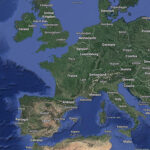
My inspiration for this week’s Sticks & Stones is a trip that my family took last year. We traveled over to the Netherlands and France to cheer on my daughter’s team. But being a plantsman, I really noticed how trees are done along the roadways in Europe. I wondered if there is a way that we could do something similar here. I was impressed by the way the trees were well-manicured to keep the line of vision clear for drivers.
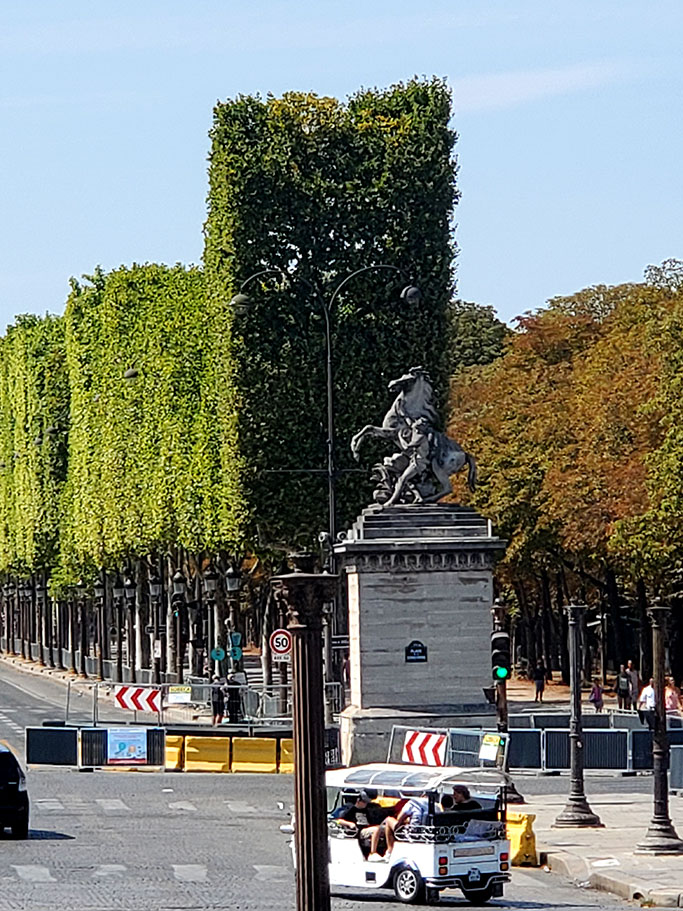
For instance, Malus Sargentii is a prime example of a smaller stature tree. They mature at 6’ to 8’ tall and between 9’ to 15’ wide, which makes them easy to keep away from the power lines, unlike the pears in my neighborhood. The Sargent crab does have a white flower in the spring, as well, and does bear fruit about ¼" in size. It is very tolerant to clay soil, air pollution, and even the fruit can attract birds and, of course, pollinators in the spring with their flowers. It would be a perfect compact replacement.
However, there are a couple of reasons why this could not really be done here. (1.) They are manicured in such a beautiful, rectangular fashion, but ours are mostly just trimmed to avoid power lines. The labor (and cost of labor) involved in manicuring for a look is perceived differently than for function. (2.) We have our power lines above ground, but they do not. These obstacles made me think, ‘What about using smaller-sized trees along the edges of the roads?’ Instead of having the tops sheared flat or even holes through one side, why not try a Malus?
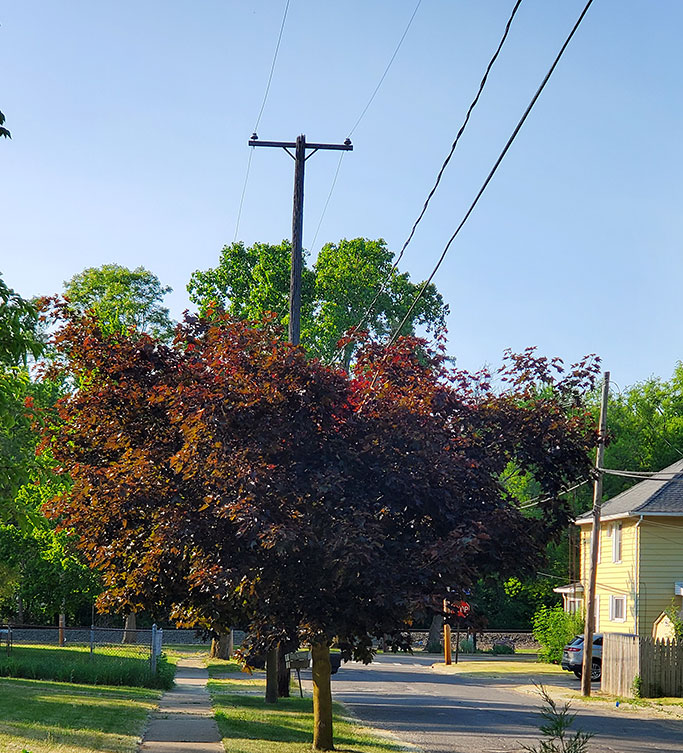
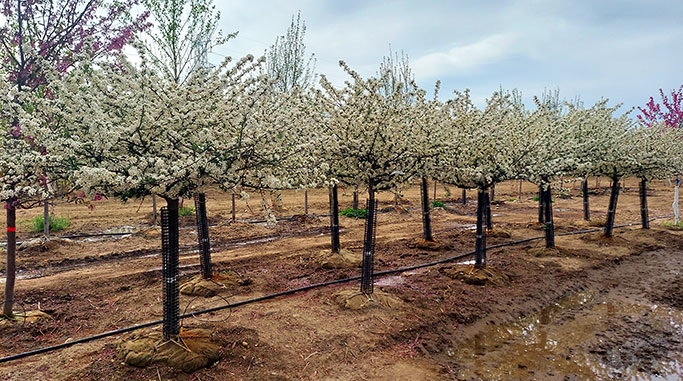
Since we are looking at the smaller crab apples, another overlooked variety is the Malus Sargent Tina. It fits into the dwarf category at about 4’-5’ tall and wide when mature. When the buds start to form in the spring, they start out with a pink color and then go to a brilliant white that is fragrant. While it is not as “fragrant” as a Cleveland pear, it differs in being considered a pleasant scent as opposed to the generally distasteful aroma of the pear. As with the Sargentii’s, Sargent Tina also attracts pollinators in the spring and has a ¼" fruit in the fall that attracts and sustains birds through winter.
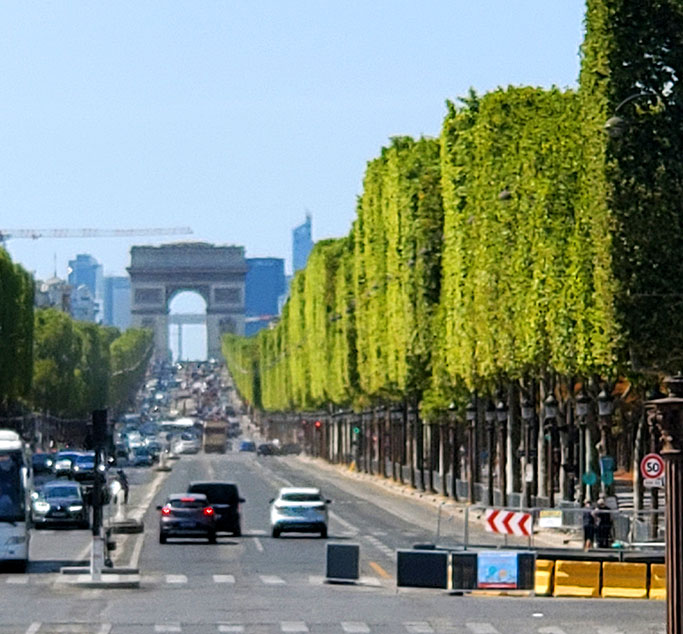
Drawing to the end I will give the French a thumbs up for keeping tree limbs away from the streets since all those Carpinus in the picture are all in a trimmed-up, rectangular shape and have been that way for decades. They said it was to be able to look down the street and see the Arc de Triomphe where they have had large parades after wars. I enjoyed my time in Europe and want to leave you with one last thought. If you are ever able to, go to Paris, you must see the Eiffel Tower at night as the lights twinkle like stars all over it.
